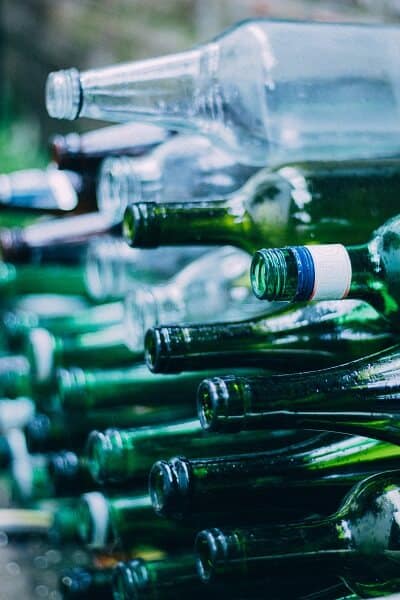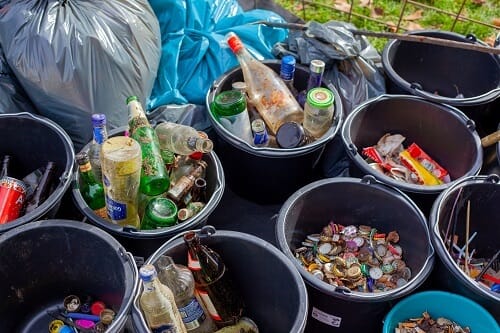Yes, glass is very recyclable. In fact, glass is one of the most recyclable materials we use. Glass can be recycled endlessly without a loss in quality or purity. Recycled glass reduces emissions and consumption of raw materials which are both good for our planet.

Glass is one of the world’s oldest and most widely used human-created materials
What is glass made from?
Believe it or not, glass is made from liquid sand. Sand melts at an incredibly high temperature (1700°C or 3090°F). The first glass ever used was made naturally. When lava from a volcano cools rapidly, it can make a type of volcanic glass called obsidian. This volcanic glass was first used to make knives, arrowheads, jewellery and even money. Today, most glass is made from readily available materials, such as sand, soda ash, and limestone.

How much Glass is recycled?
Glass has one of the highest recycling rates compared to other materials. In 2018, the US recycled about one-third (31%) of all glass used. While this rate looks high, it pales in comparison to Switzerland where 94% of glass containers were recycled that same year. Why does the US have a much lower glass recycling rate? The main reason is contamination.

Clean glass vs Contaminated glass
Some recycled glass containers are not able to be used in the manufacture of new glass bottles and jars or to make fiberglass. This may be because there is too much contamination or the recycled glass pieces are too small to meet manufacturing specifications. Or, it may be that there is not a nearby market for bottle-to-bottle recycling. This recovered glass is then used for non-container glass products. These “secondary” uses for recycled container glass can include tile, filtration, sandblasting, concrete pavements, and parking lots.
The recycling approach that the industry favors is any recycling program that results in contaminant-free recycled glass. This helps ensure that these materials are recycled into new glass containers
Do glass manufacturers like recycled glass?
Manufacturers benefit from recycling glass in several ways:
- Recycled glass reduces emissions by 20% compared to new glass
- Recycled glass reduces the consumption of raw materials
- Glass manufacturers need recycled glass to satisfy the high demand for new glass containers.
- The more recycled glass manufacturers can use, the greater the decrease in energy (up to 26%) used in their furnaces. This extends the life of plant equipment and saves energy.
- Processing recycled glass is profitable for manufacturers in the long run because it lowers their costs while also benefiting the environment.
- Recycled glass can be substituted for up to 95% of raw materials

Is broken glass recyclable?
While broken pieces of glass can be recycled, they can’t be used to make a new bottle. Instead, broken glass is used as additives for tiles or fiberglass.
When recycling broken glass, make sure to put it into another glass container instead of loose in your recycling bin. Broken glass can be a safety hazard for people working in recycling plants.
Another thing to keep in mind is that some types of glass are not recyclable, whether broken or not. These include mirrors and ceramics. Check with your waste collection provider for disposal options.
Does glass biodegrade?
Glass does not biodegrade or decompose easily. A glass bottle would take about 4,000 years or more to decompose. In fact, some of the oldest pieces of glass found today have been dated back to ancient Mesopotamia (over 3,500 years ago).

Glass Recycling Facts
- Over a ton of natural resources are saved for every ton of glass recycled.
- One ton of carbon dioxide is reduced for every six tons of recycled container glass used in the manufacturing process.
- Glass bottles have been reduced in weight by approximately 40% over the past 30 years.
- Recycled glass is substituted for up to 95% of raw materials.
- In the US States with container deposit legislation have an average glass container recycling rate of just over 63%, while non-deposit states only reach about 24%